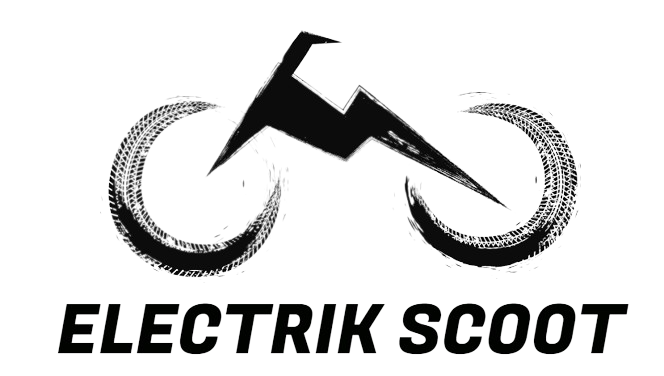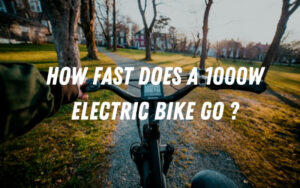How to choose an Electric Bike for you? If it is hard to make a bike choice, you can read our expert tips to find one for yourself. Electric bicycles are becoming the fastest expanding sector in the cycle industry. While traditional bicycles are declining in practically every sector, electric bike sales continue to increase rapidly year over year.
E-bikes are attracting an increasing number of first-time riders due to their ease of use and exhilarating capability. If you've been thinking about purchasing your electric bicycle but don't know where to start, this article is for you!
Table of Contents
How to choose an Electric Bike? – 6 Things to consider!
When it comes to purchasing an electric bicycle, a few key factors to consider: style and pricing. Both characteristics will assist you in cutting through the clutter and locating the best e-bike for your needs.
1. Classes of E-bikes
Electric bikes are classified based on their level of motor power, primarily for regulatory purposes. An important decision point is determining which type of e-bike you require:
- Class 1
The motor only activates while you pedal and stops assisting at 20 mph. The majority of novice riders begin with a class 1 E-bike. Class 1 motorcycles are the least expensive and most widely approved. One can be ridden on city streets as well as various bike lanes. This e-bike is beginning to be permitted on regular mountain bike trails. However, access is not ubiquitous.
- Class 2
This class of E-bikes contains a pedal assisting option with a top speed of 20 mph. Class 2 e-bikes are usually permitted in the same areas as class 1 e-bikes. Because both types have a top speed of 20 mph for motor assistance, because REI does not sell class 2 bicycles, this article will concentrate on class 1 and class 3 bicycles.
- Class 3
Class 3 E-bikes are exclusively pedal-assisting, but the assistance remains until you reach 28 mph. Travelers and job workers are likely to choose Class 3 e-bikes. They are faster and more powerful and even cost more. The benefit of improved performance is that you can catch up with traffic more efficiently. They can also climb higher and carry greater weights. The downside is that you won't cycle on most bike routes or MTB trail routes.
2. E-bikes Riding Range
The power motor in each bike comes primarily from the manufacturer. The design choice is between speed and riding range. A more powerful engine provides more acceleration to catch up with traffic and more power to climb hills and transport loads. A more powerful motor also depletes the batteries more quickly, lowering your riding range.
When evaluating prospective e-bikes, you'll notice vast riding-range specifications, such as 20-100 pedal-assisted miles. This is because so many factors influence riding range.
3. Batteries
Finding an E-bike with a large battery helps. When purchasing an E-bike, look for the following features in a battery:
- Charging Time:
Typical batteries take three to four hours to charge, while larger-capacity batteries taking longer fully. If you intend to commute by e-bike, you can purchase extra chargers or bring your charger with you.
- Battery Capacity:
Specific E-bikes allow bikers to utilize two batteries at the same time. This can lengthen your ride, and if one battery dies, you have a spare. You can also purchase a spare battery to have it on hand or change your current one when it reaches the end of its useful life.
- Battery Installation:
Batteries inserted into the bike save up room for containers or a compact bike bag. External batteries, on the other hand, are simpler to charge and replace.
4. Motor
There are two types of motors that are installed in an E-bike. Both are discussed below:
- Mid-drive Motor:
This design is found in many E-bikes for a range of reasons. This type of motor is placed in the bike's bottom bracket. The pedal assist reacts naturally, and having the engine's weight fixed and low helps keep the ride smooth and steady.
- Hub-drive Motor:
Hub-drive motors direct pedal force to the back wheel, providing you with the sensation of being dragged along. It should be noted that fixing a puncture on a wheel with a hub drive can be more intricate than changing a puncture on a regular bike.
5. Pedal-assist stimulation
The slicker and more reactive the pedal-assist feels, the better the bike performs. Try a few bicycles to choose one that responds at the speed and strength that works best for you.
6. Security Lock
Most bikes come with back wheel bolts attached to the bike, while others have locks near the batteries that may be fitted to meet a bike lock bought separately.
Bonus Tips for Buying the ideal E-bike:
- Review Your Requirements:
Electric bikes are made for a variety of persons and purposes. It is up to you to determine which characteristics are most vital. If comfort is essential, a step-through frame may be the best option. If hill climbing is critical, see if a mid-motor or a hub-motor maybe your best option. Understanding your requirements can assist you in determining which characteristics are most important on your electric bike.
- Go for a test ride:
One of the most important and enjoyable parts of purchasing an E-bike is test riding. Using an electric bike lets you thoroughly see features, evaluations, and analyses to answer all your basic questions and queries.
- Look for the warranty:
While purchasing an electric bike, look for one with a warranty. You may be confident that your investment was worthwhile. Most electric bike companies with that sell bikes for more than $2000 should provide a two-year warranty on materials, motors, and batteries, along with spare batteries.
- Look at the more extended run:
While purchasing an E-bike, look for the longer-run aspects such as the manner the bike was made, the quality of its build, and the after-purchase care to keep it in good shape. With regular maintenance, you should anticipate your bike to survive at least five to ten years.
- Buy from local Vendors:
Even if your purchase goes as well as imaginable, you could face any problem or issue with the bike. In such a case, the seller should be nearby to assist you if needed. Furthermore, you will also be able to attain spare parts of the bike quickly.
How much does a decent electric bike cost?
The cost of an electric bike can vary widely based on brand, features, and specifications. On average, you can expect to invest anywhere from $800 to $3000 or more for a quality electric bike.
Do I need a special license to ride an electric bike?
In most places, you don't need a special license to ride a regular electric bike. However, some regions have specific regulations for faster or more powerful e-bikes, so it's essential to check your local laws.
How long does an electric bike battery last?
The lifespan of an electric bike battery depends on factors like usage, charging habits, and battery quality. Generally, a well-maintained battery can last between 3 to 5 years or more.
Can I ride an electric bike in the rain?
Most electric bikes are designed to handle light rain and wet conditions. However, it's essential to check the manufacturer's guidelines to ensure your specific e-bike is suitable for riding in the rain.
Are electric bikes suitable for hilly terrain?
Yes, electric bikes are excellent for hilly terrain. The motor assistance helps you conquer steep inclines with ease, making them a popular choice for riders in hilly regions.
What’s the maintenance like for an electric bike?
Electric bikes typically require less maintenance than traditional bikes. Regular maintenance includes checking tire pressure, keeping the bike clean, and ensuring the battery is charged correctly.
Conclusion
Choosing the right electric bike is an exciting journey that involves considering your riding needs, technical specifications, and personal preferences. By following the steps outlined in this guide, you'll be well-prepared to select an electric bike that enhances your daily commute, adventures, and overall enjoyment of cycling. With the right electric bike, you'll experience the freedom, convenience, and eco-friendliness that e-bikes bring to the table.



